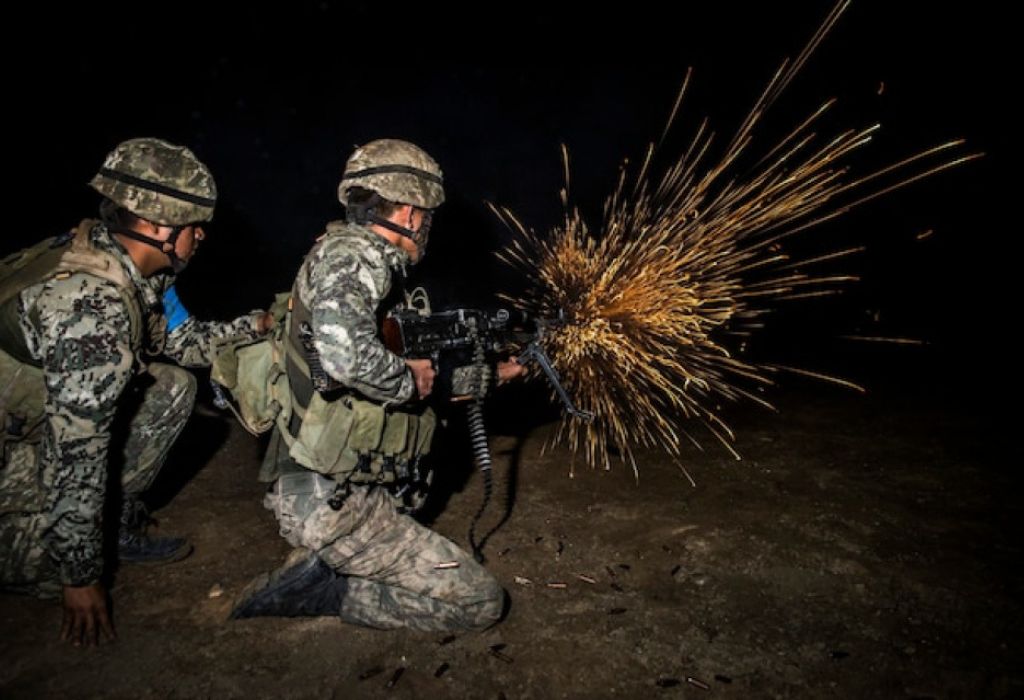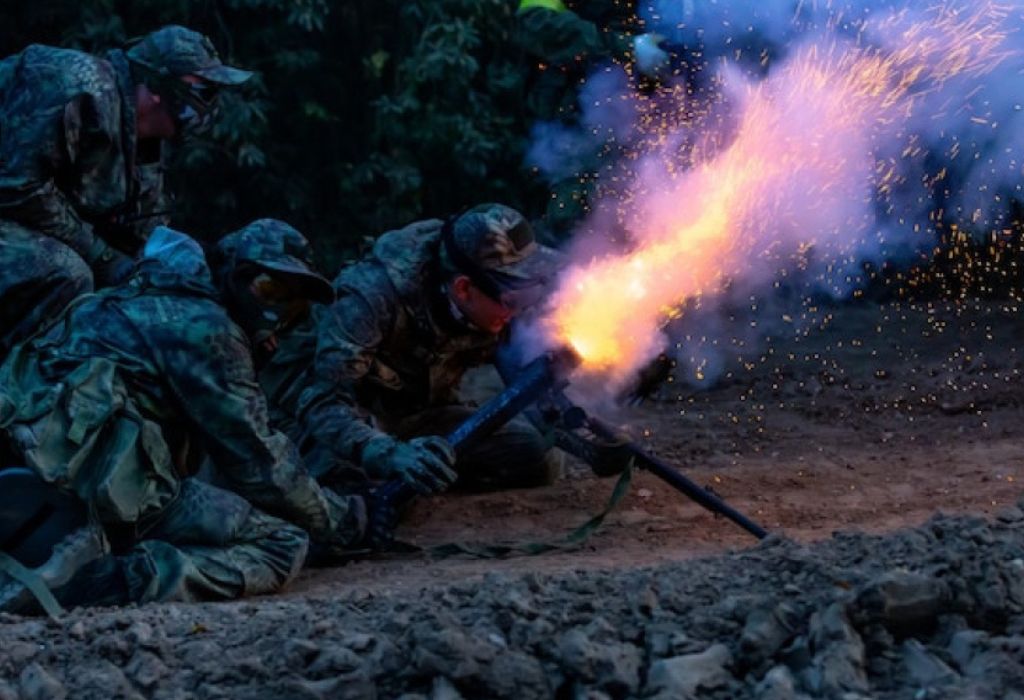In a naval shipyard, a welder secures a hull plate that will protect sailors thousands of miles from home.
On an airbase, sparks fly as a metals technician restores an aircraft part critical to its next mission.
These scenes show the silent but vital role of military welders across every branch of service.
The question many ask is simple: how much does a military welder make in 2025.
The answer depends on rank, years of service, duty location, and allowances that transform base pay into a competitive package.
Unlike civilian welders who receive hourly wages, military welders are compensated through structured pay charts.
This includes base pay, housing allowances (BAH), subsistence allowances (BAS), and sometimes bonuses or special duty pay.
According to the Defense Finance and Accounting Service, an E-3 with under two years of service earns $2,330 per month in 2025 base pay source.
When combined with allowances, total monthly income often surpasses $3,500 depending on duty station.
Civilian comparisons highlight the value. ZipRecruiter reports that “military welder” roles average $22.26 per hour in the United States, equating to about $46,000 annually source.
With tax-free allowances and healthcare included, active-duty compensation often rivals or exceeds these numbers.
This guide explores salary breakdowns across the Army, Navy, Marine Corps, and Air Force, explaining how factors like BAH, sea pay, and deployment bonuses impact totals.
By the end, the full picture of how much a military welder makes in 2025 will be clear for recruits, families, and anyone considering the trade.
What Counts as a Military Welder? (MOS/Rating/AFSC)

Military welders are not listed under one universal job title. Each branch assigns specific roles where welding and metal fabrication are core duties.
In the Army, welders serve as 91E Allied Trade Specialists, responsible for machining, fabrication, and welding repairs on vehicles, tools, and structures.
The Navy relies on Hull Maintenance Technicians (HTs) who weld, braze, and maintain piping, ship hulls, and support systems aboard vessels.
The Marine Corps designates MOS 1316 Metal Workers, skilled in planning, preparing, and executing metal repairs in field and garrison environments.
In the Air Force, welding duties fall under Aircraft Metals Technology (AFSC 2A7X1), where airmen repair and fabricate aircraft components with advanced precision.
What does an Army 91E do?
They fabricate and repair tools, weapons, and vehicle parts using welding and machining.
What does a Navy HT handle?
They maintain shipboard structures, piping systems, and hull integrity through welding and cutting.
What is the Marine Corps MOS 1316 role?
They plan welding sequences, select materials, and perform repairs under varied conditions.
What does the Air Force 2A7X1 cover?
They specialize in welding and machining aircraft parts to maintain flight readiness.
Are these roles the same as civilian welders?
Not exactly; military welders combine welding with fabrication, machining, and maintenance, making the scope broader.
How Military Pay Is Built (Base + Allowances + Special Pays)
Military pay is structured with multiple components. Base pay depends on rank and years of service, while allowances add significant value.
Allowances like BAH (Basic Allowance for Housing) and BAS (Basic Allowance for Subsistence) are tax-free, increasing take-home pay. Special pays may include sea pay, deployment pay, and bonuses.
Do military welders get welder-specific pay?
No, pay is based on rank and time, but extra pay applies for deployments or sea duty.
Is BAH taxable?
No, BAH and BAS are tax-free, making effective pay higher than civilian salaries.
Does deployment increase pay?
Yes, hostile fire pay, hardship duty pay, and tax exclusions can boost income.
Can bonuses apply to welders?
Yes, enlistment or re-enlistment bonuses are sometimes offered for trades like welding.
Do reservists receive the same benefits?
They receive prorated drill pay, with full allowances when activated.
National Snapshot: Reported Military Welder Pay
Self-reported salary data helps compare military welders with civilian counterparts.
ZipRecruiter lists $22.26 per hour, or about $46,000 annually, for military welder roles. Glassdoor estimates for Army 91E soldiers range $4,000–$7,000 per month, while Navy HTs report between $49,000–$70,000 per year.
Why do reports differ from DFAS charts?
They often include allowances and bonuses, while DFAS lists only base pay.
Are reported salaries reliable?
They reflect averages and should be compared with official pay tables.
Can totals exceed $70,000?
Yes, in high-cost housing areas or with frequent deployments.
How do officer welders fit in?
Officers in engineering roles follow officer pay scales, which are higher.
Is civilian pay usually higher?
Not always—allowances, healthcare, and retirement benefits give the military strong total compensation.
By Service: Typical Pay Scenarios
Army – 91E Allied Trade Specialist
Army welders earn according to rank and years in service. An E-3 earns about $2,330 per month in base pay in 2025, plus BAH and BAS.
Is 91E just welding?
No, it includes machining, repair, and fabrication.
Does location affect pay?
Yes, high BAH areas increase total income.
Do Guard/Reserve 91Es earn differently?
Yes, they receive drill pay unless activated full time.
Is deployment common?
Yes, especially in support roles overseas.
Navy – Hull Maintenance Technician (HT)
Navy HTs benefit from sea pay and tax-free allowances while deployed. Salaries often range $49,000–$70,000 annually.
Do HTs only weld?
No, they also handle plumbing, piping, and structural maintenance.
Does sea duty increase pay?
Yes, sea pay adds monthly income for time aboard ships.
Are Navy certifications transferable?
Yes, shipyard and marine industry roles recognize Navy training.
Can HTs earn bonuses?
Yes, re-enlistment bonuses sometimes target technical ratings like HT.
Marine Corps – 1316 Metal Worker
Marine Corps welders support expeditionary and garrison missions. Pay follows enlisted scales with BAH, BAS, and deployment bonuses.
Do Marines earn less than other branches?
No, pay charts are the same, but allowances vary by location.
Are deployments frequent?
Yes, Marines often deploy, which increases pay with special allowances.
What skills are gained?
Welding, fabrication, and metal repair under demanding conditions.
Is training extensive?
Yes, Marines attend technical schools for welding and fabrication.
Air Force – Aircraft Metals Technology (2A7X1)
Airmen in this role combine welding with advanced machining for aircraft. Salaries align with enlisted charts, plus allowances.
Do Airmen deploy often?
Yes, though some work in base shops with stable hours.
What makes this role unique?
It emphasizes precision welding for aviation standards.
Is civilian crossover strong?
Yes, aerospace and machining sectors value this training highly.
Do they earn extra pay?
Yes, deployment allowances and special duty pay may apply.
Civilian vs Military: Salary Comparison
Civilian welders earn a median of $51,000 annually according to the Bureau of Labor Statistics. Top earners make over $75,000 depending on industry.
Military welders may match or exceed this when allowances, benefits, and tax exclusions are included.
Do military welders take home more than civilians?
Yes, allowances and free healthcare add thousands in untaxed value.
Are benefits part of pay?
Yes, healthcare, housing, and retirement boost overall compensation.
Is overtime a factor?
Military schedules can mean long hours, but pay is fixed by rank.
Do deployments raise pay?
Yes, combat zones add tax-free bonuses.
Does service experience help after separation?
Yes, skills translate into high-paying civilian roles with certifications.
9 Factors That Influence Military Welder Pay
Military pay varies widely based on multiple factors beyond rank.
Does rank matter most?
Yes, higher ranks receive significantly more base pay.
Does location affect pay?
Yes, high-cost BAH areas increase income.
Does family status matter?
Yes, BAH is higher for those with dependents.
Does deployment add pay?
Yes, hostile fire and hardship duty pay raise income.
Do certifications help?
Yes, they can lead to specialized assignments and promotions.
Training, Credentials, and Bonus Potential

Military welders gain technical training and may earn civilian-recognized certifications. These improve promotion chances and post-service opportunities.
Are AWS certifications available in service?
Yes, some commands sponsor testing.
Do welders earn bonuses for certifications?
Indirectly, by qualifying for critical roles and billets.
Can they train in NDT or inspection?
Yes, advanced paths are available for career progression.
Does training continue throughout service?
Yes, refresher courses and new qualifications are common.
Does experience transfer to civilian jobs?
Yes, military welders often transition to high-demand industries.
Civilian Career Path After Service
Many military welders transition into shipyards, refineries, and aerospace fabrication. Others pursue inspection roles as Certified Welding Inspectors (CWI).
Do military welders earn more after service?
Yes, with overtime and certifications, many exceed $80,000 annually.
Which industries hire ex-military welders?
Shipbuilding, oil and gas, and aerospace.
Does GI Bill help with training?
Yes, it covers advanced certifications after service.
Are security clearances valuable?
Yes, they open defense contracting opportunities.
Is inspection a good career path?
Yes, CWI and NDT technicians earn strong salaries.
Conclusion
So, how much does a military welder make in 2025? Salaries depend on rank, time in service, and duty station. Base pay starts around $28,000 annually for new recruits and rises significantly with promotions, allowances, and deployments.
When housing, food, healthcare, and retirement benefits are included, total compensation often matches or exceeds civilian averages. For those considering this career, welding in the military offers steady pay, world-class training, and a strong foundation for high-paying civilian roles.
Military welders are more than tradespeople; they are guardians of safety and readiness. Each weld contributes to missions that protect lives, proving that this career is both financially and personally rewarding.

I’m Darrell Julian, the founder, lead writer, and hands-on welding enthusiast behind ArcWeldingPro.com. With more than 15 years of real-world welding experience, I created this platform to share what I’ve learned in the field, in the shop, and in the heat of the arc.


